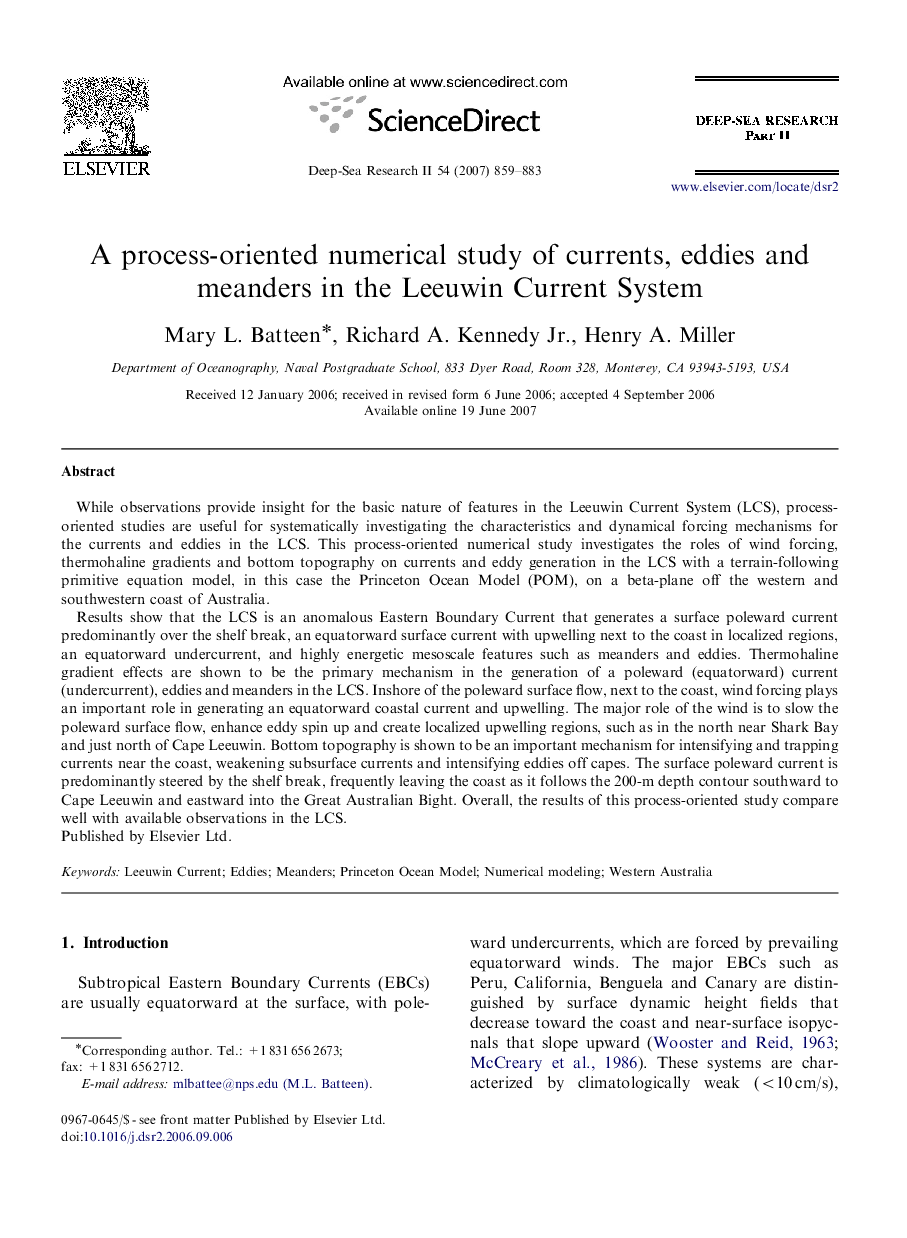| Article ID | Journal | Published Year | Pages | File Type |
|---|---|---|---|---|
| 4538035 | Deep Sea Research Part II: Topical Studies in Oceanography | 2007 | 25 Pages |
Abstract
Results show that the LCS is an anomalous Eastern Boundary Current that generates a surface poleward current predominantly over the shelf break, an equatorward surface current with upwelling next to the coast in localized regions, an equatorward undercurrent, and highly energetic mesoscale features such as meanders and eddies. Thermohaline gradient effects are shown to be the primary mechanism in the generation of a poleward (equatorward) current (undercurrent), eddies and meanders in the LCS. Inshore of the poleward surface flow, next to the coast, wind forcing plays an important role in generating an equatorward coastal current and upwelling. The major role of the wind is to slow the poleward surface flow, enhance eddy spin up and create localized upwelling regions, such as in the north near Shark Bay and just north of Cape Leeuwin. Bottom topography is shown to be an important mechanism for intensifying and trapping currents near the coast, weakening subsurface currents and intensifying eddies off capes. The surface poleward current is predominantly steered by the shelf break, frequently leaving the coast as it follows the 200-m depth contour southward to Cape Leeuwin and eastward into the Great Australian Bight. Overall, the results of this process-oriented study compare well with available observations in the LCS.
Related Topics
Physical Sciences and Engineering
Earth and Planetary Sciences
Geology
Authors
Mary L. Batteen, Richard A. Jr., Henry A. Miller,
